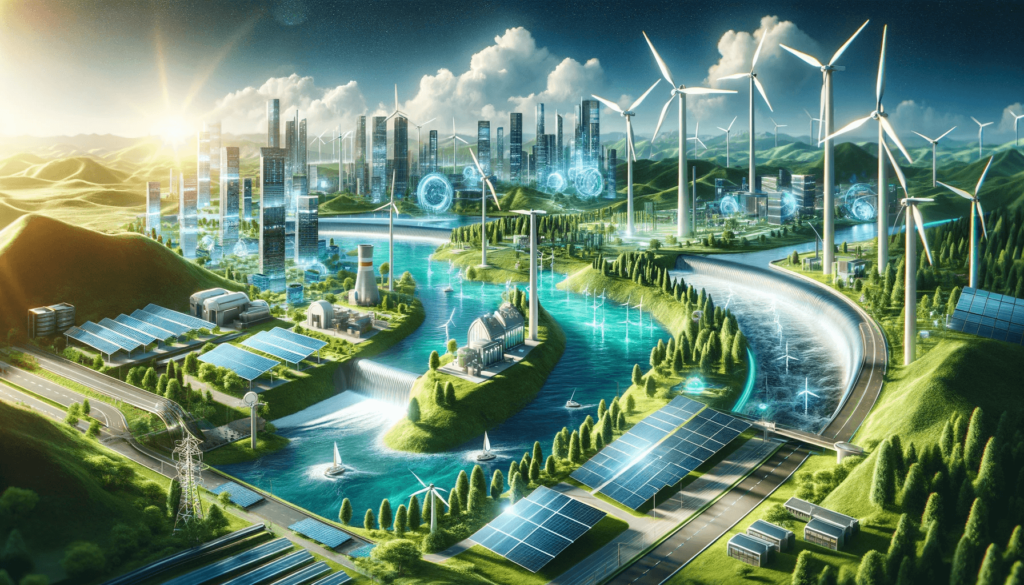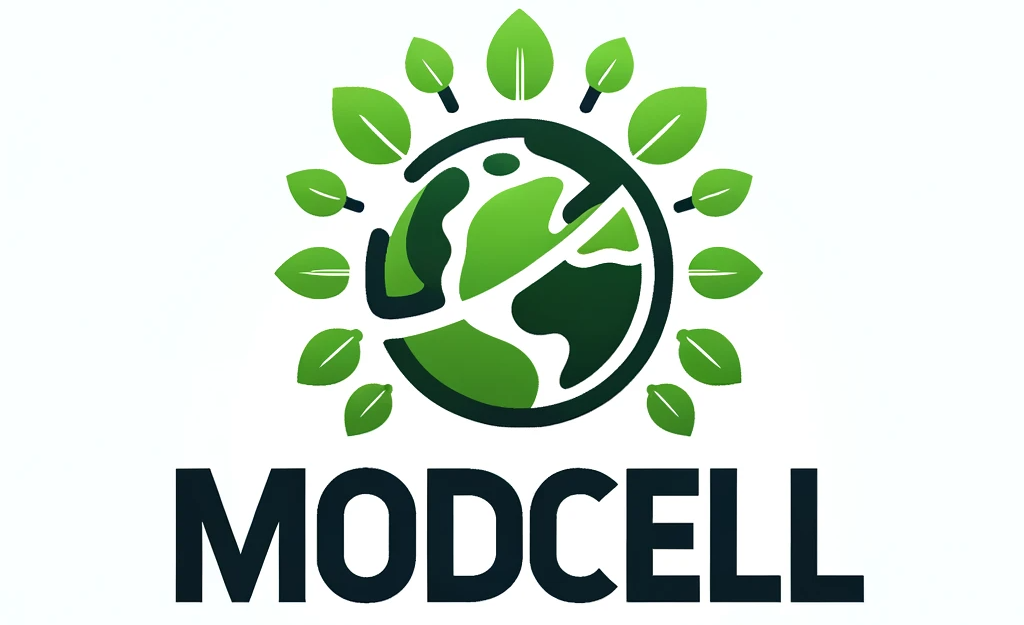
In an era marked by environmental consciousness, green energy stands at the forefront of a global paradigm shift. The urgency to transition from fossil fuels to renewable sources is fueled not only by environmental concerns but also by the immense potential that green innovations hold. This article explores the rapidly evolving world of renewable energy, spotlighting the groundbreaking technologies and initiatives driving this change. As the planet faces the dual challenges of climate change and energy scarcity, renewable sources like solar, wind, hydro, and geothermal power are emerging as key players in the energy landscape. This exploration into the future of green energy promises to unveil a tapestry of innovations, poised to redefine our approach to sustainable living and energy consumption.
Current State of Green Energy
As of today, the landscape of green energy is marked by a diverse array of technologies, each contributing uniquely to the global energy mix. Solar power, with its rapidly falling costs and increasing efficiency, leads the charge in renewable energy adoption. Innovations in photovoltaic cell technology have enabled higher energy conversion rates, making solar panels more accessible and effective than ever before. Wind energy, both onshore and offshore, follows closely, with advancements in turbine design enhancing energy capture. Hydroelectric power remains a stalwart in the renewable sector, offering consistent and reliable energy, while geothermal energy, tapping into the earth’s heat, presents an underutilized but promising option.
Additionally, the integration of renewable sources into national grids has seen substantial progress. Countries like Denmark and Germany are leading examples, achieving significant portions of their energy needs from renewables. This shift is not just a technological transformation but also a testament to growing environmental awareness and policy support. However, the journey is far from complete. The renewable sector faces challenges in storage, distribution, and varying energy outputs, necessitating further innovation and investment.
Emerging Technologies in Renewable Energy
The horizon of green energy is being reshaped by a wave of emerging technologies, each heralding a new era of sustainability and efficiency. One of the most promising areas is advanced solar technology, including perovskite solar cells, which offer higher efficiency and lower manufacturing costs than traditional silicon-based cells. Additionally, floating solar farms, which can be installed on bodies of water, are gaining attention for their ability to conserve land space while harnessing solar energy.
Wind energy is also seeing transformative advancements. The development of larger, more efficient offshore wind turbines is enabling the harnessing of wind power in deeper waters. This expansion not only increases potential energy generation but also reduces visual and noise impacts on communities. Onshore, bladeless wind turbines are emerging, which use vibration to generate electricity, offering an innovative and less intrusive approach to wind energy.
Another exciting development is in the field of energy storage. Lithium-ion batteries are evolving, but new technologies like flow batteries and compressed air energy storage present alternatives with the potential for larger capacity and longer lifespan. These storage solutions are crucial for managing the intermittent nature of renewable sources like solar and wind.
Additionally, green hydrogen, produced using renewable energy, is poised to revolutionize sectors that are difficult to electrify, such as heavy industry and transportation. Bioenergy, too, is advancing, with research focusing on sustainable biofuels that do not compete with food crops for land.
These technologies, coupled with smart grid developments, are not just enhancing existing renewable sources but also enabling the integration of multiple energy types, creating a more resilient and flexible energy system.
Challenges and Solutions in Green Energy Adoption
The path to a fully renewable energy future is laden with challenges, yet solutions are emerging that promise to pave the way forward. One of the primary challenges is the intermittent nature of sources like solar and wind. Unlike fossil fuels, which can provide constant energy, renewable sources depend on environmental conditions. To address this, advancements in energy storage technologies, such as more efficient battery systems and innovative methods like pumped hydro storage, are crucial. These technologies allow for the storage of excess energy generated during peak conditions for use during periods of low generation.
Another significant challenge is the integration of renewable energy into existing power grids. Many current grids are not designed to handle the variable outputs from renewable sources. Upgrading these grids with smarter, more flexible technologies is essential for efficient energy distribution and management. This includes the development of smart grids that can dynamically balance supply and demand, and integrate diverse energy sources seamlessly.
Moreover, the environmental impact of renewable energy production, such as land use for solar farms or the ecological effects of hydropower, cannot be overlooked. Developing smaller, more efficient technologies and focusing on low-impact renewable sources like rooftop solar and offshore wind can mitigate these concerns.
Lastly, the transition to green energy requires significant investment and supportive policies. Encouraging public-private partnerships, offering incentives for renewable energy projects, and setting clear renewable energy targets can accelerate the adoption of green technologies.
The Role of Policy and Investment in Green Energy
Government policy and investment play pivotal roles in shaping the future of green energy. Effective policy frameworks are essential for creating a conducive environment for renewable energy development. For instance, feed-in tariffs, renewable portfolio standards, and tax incentives have proven effective in accelerating the adoption of renewable technologies. Governments around the world are increasingly recognizing the importance of these policies in achieving their climate goals and are actively revising their energy strategies to include robust support for green technologies.
Investment is equally crucial. The transition to renewable energy requires substantial financial resources, not only for the development of new technologies but also for the retrofitting of existing infrastructure. Public funding, along with private sector investment, can significantly drive innovation in green energy. Increasingly, we are witnessing a surge in investments from private entities, venture capitalists, and environmentally-focused funds, which view renewable energy as a promising and sustainable market. This trend towards green financing is a testament to the growing economic viability and potential of renewable energy sources.
Impact on the Economy and Society
The shift towards green energy is not just an environmental imperative but also a significant economic and social opportunity. Economically, the renewable energy sector is a powerful engine for job creation. From research and development to manufacturing and installation, the green energy transition is generating new employment opportunities across various skill levels. Socially, the democratization of energy through decentralized renewable sources, like community solar projects, empowers local communities and promotes energy independence.
Additionally, the reduction in air pollution and greenhouse gas emissions from renewable sources has direct positive implications for public health. By decreasing reliance on fossil fuels, communities experience fewer pollution-related health issues, contributing to a healthier, more sustainable society. As renewable energy becomes more prevalent, its role in driving sustainable economic growth and fostering a healthier society becomes increasingly evident.
Conclusion and Future Outlook
As we look towards the future, it’s clear that green energy is not just a trend but a fundamental shift in how we perceive and utilize energy. The innovations in renewable technologies, coupled with supportive policies and investments, are setting the stage for a sustainable and resilient energy future. While challenges remain, the relentless progress in this field is a beacon of hope for a cleaner, greener planet. As we continue to innovate and adapt, the future of green energy looks bright, promising a world where renewable sources not only power our homes and industries but also drive environmental preservation and social well-being.
